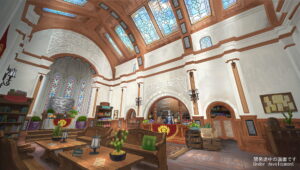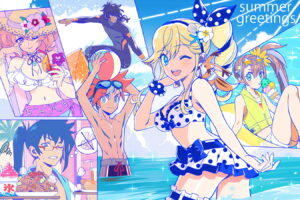July 2024 Update
Development Update
It’s July, meaning we’re in the second half of 2024 now. It’s almost Tanabata… What’s your wish? Time for the monthly project report you’ve all been waiting for – this time brought to you by Kaneko!
ARMED FANTASIA July 2024 Project Diary
Long time no see. Kaneko, the total game designer here.
By the way, last month, I’m the one who told a certain staff member who was feeling under the weather to “eat meat!” Films taught me that eating a ton when you’re feeling sick makes you better. Logic has nothing to do with it.
Now then, sorry to start off with something that has nothing to do with Armed Fantasia, but…
Recently, a lot of my work has been getting revealed, so I’ve been worried as to whether or not people have been getting worried. “Is he working too much?” “Is someone blackmailing him into working a ton?” “Don’t tell me Akifumi Kaneko actually runs on a system like “Saburo **tte” and “Hajime **tate?”, etc.
(I actually got an email from Naruke-san checking on my health)
“I get a little depressed sometimes, but I’m fine.” (voiced by the Witch)
…In any case, I started working on both Princession Orchestra and CLASSIC★STARS after Symphogear XV was already finished, so the really hard parts of the work I took on took place several years ago.
Therefore, it’s not like I’m reaching the culmination of all my work at the exact same time in some crazy rush of work, so don’t worry. The truth is simply that certain circumstances forced the announcement timings to overlap with each other.
In any case, I hope you’ll cheer on these new anime alongside Armed Fantasia. (PR)
I’m not just throwing everything I personally want into this
Since it’s been a while since I handled an update, I’d like to talk about some behind-the-scenes things as well as how I go about creating anomalies (kaiju).
Before I start on the individual settings of each anomaly, I work on the overall “fittings.” Londenium, the stage where the story takes place, is a world that boasted advanced alchemy techniques, where nature and technology coexisted on a high level.
But at some point in Londenium, the environment violently changed, and the natural laws of the world became distorted. This affected the world’s nature creatures as well, introducing beings from outside of the natural balance that had existed thus far.
These are anomalies.
In other words, the mutated, degenerated, and modified versions of the native creatures of Londenium serve as the base for the anomaly designs. The first rule I set here is to make them as far from “humanoid” as possible.
Why? Because in these story-driven RPGs, humans are always the ones who lead the story – so if the anomalies were humanoid as well, they would start to resemble the silhouettes of our cast.
As usual, the main characters of Armed Fantasia are also humans, and the same goes for the people involved with the Order of the Sacred Key as well as the Iconocluster.
These factions will clash with each other for various reasons over the course of the story, and my philosophy (self-satisfaction) is that I want to entertain players’ eyes by at least maximizing the diversity of the different kinds of silhouettes they encounter in battle when they’re fighting things other than the enemy factions.
It’s unique precisely because it isn’t “trendy”
Next, I think about all the gameplay-related elements. This is my second rule.
Through discussing things with the person in charge of the battles, I can pick up elements that are related to the gameplay such as “We want a fast anomaly,” “we want a fire-elemental anomaly,” “we want a bonus monster that makes leveling up easier.”
Then, I start outlining the necessary specifications for sending orders out to the designers – an anomaly encyclopedia. The gameplay-related elements included here aren’t simply things like the parameter-based differences outlined above. For example, a type of anomaly that’s even more off-limits in AF than a humanoid type would be…
“A creature that could be (generally) called realistic!”
It should be easy to imagine that the type of creatures described above would mostly have to be either black, brown, or grey in order to look realistic (and not look ridiculous). In other words, it would be difficult to do color variations in order to increase the overall volume.
Of course, for an extravagant game made in an extravagant way, not having to create any color variations at all would be ideal, and there’s also the option of designing things in a way that doesn’t take color variations into account, if you’re working on a game where you don’t really need a lot of different enemies.
But Armed Fantasia is an RPG with a decent amount of volume, so we’ll need enough anomalies to make sure things don’t get boring while players are working through that volume. Therefore, anomaly color variations are essential “gameplay-related elements” and an important rule that needs to be set before the actual designing happens.
“Diverse silhouettes and possible color variations”
These two rules serve as the visible, yet invisible roots behind the anomaly designs.
Understanding the settings, then upholding them, crumbling them, and adding things on
Next, we finally get to the setting/image design of each individual anomaly…
The Ndendecki, which I’ll be introducing this time, is an anomaly whose name is based on a famous traditional UMA from the Congo region of Africa.
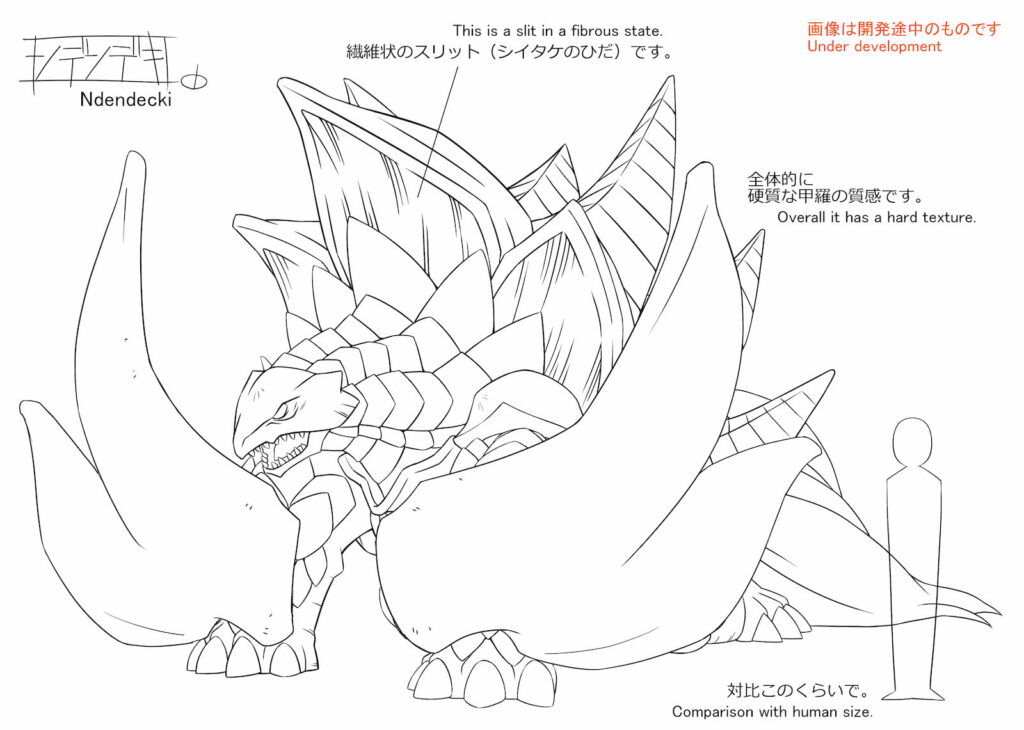
Tracing the actual lore, the Ndendecki’s shell is actually supposed to be soft, but after giving it some versatility so we could create color variations as well as hearing “we want a resilient anomaly” from the person in charge of battles, I had them give it a hard/resilient/heavy design.
The cool-looking shield-type shells on its front legs stick out a lot – this was an idea from Ishii, one of our designers. He took the ‘resilient’ gameplay-related idea from the person in charge of battles and upgraded it into something cool.
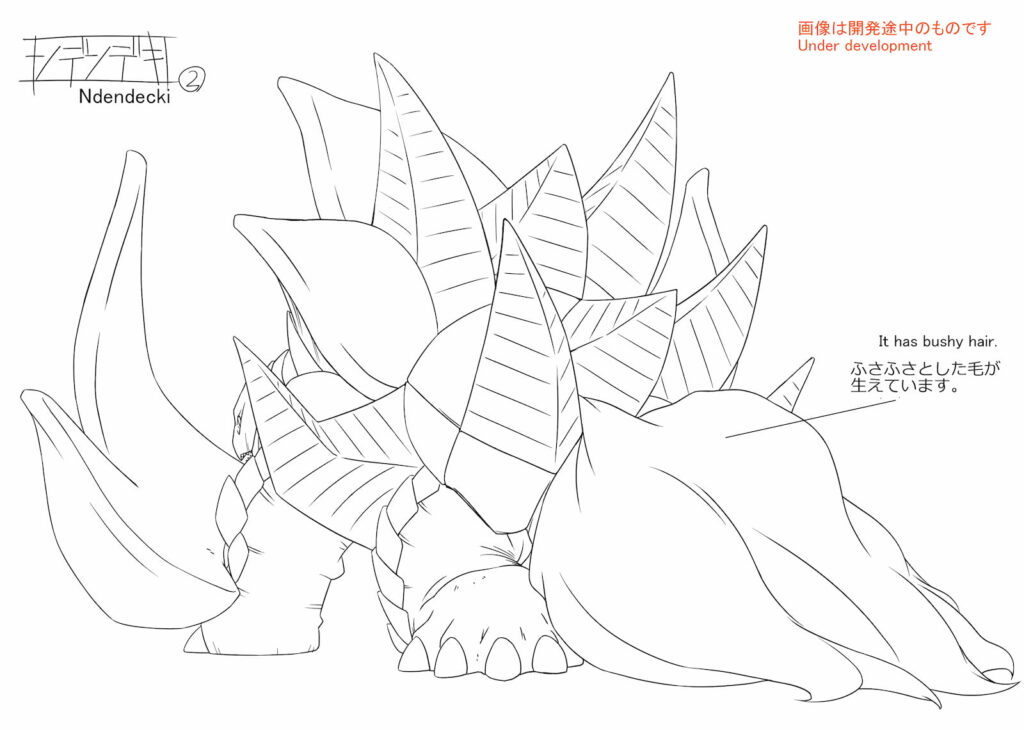
Its unique point is the smooth hair sticking out from the back of its shell. This is what’s known as “turtle hair,” hair created from algae that grows on turtles. You may have seen this thing before if you’ve looked at any scrolls or picture books featuring Urashima Taro.
Looking back… there are a lot of turtle motif monsters in the world, but I was surprised that I didn’t really see many that have actual hair, so I tried adding that to the specifications when I made the order. (If there are some that do exist, sorry)
At this point, most of the design becomes set in stone, and it is transferred from my hands to Ishii and the rest of the designers of bee tribe.
The Colour Out of Space
And just like that, the designers at bee tribe add a bunch of details to the art! It looks completely different now that it’s been all dolled up. Aside from adding color, they’ve also added textures as well, enhancing the anomaly’s presence.
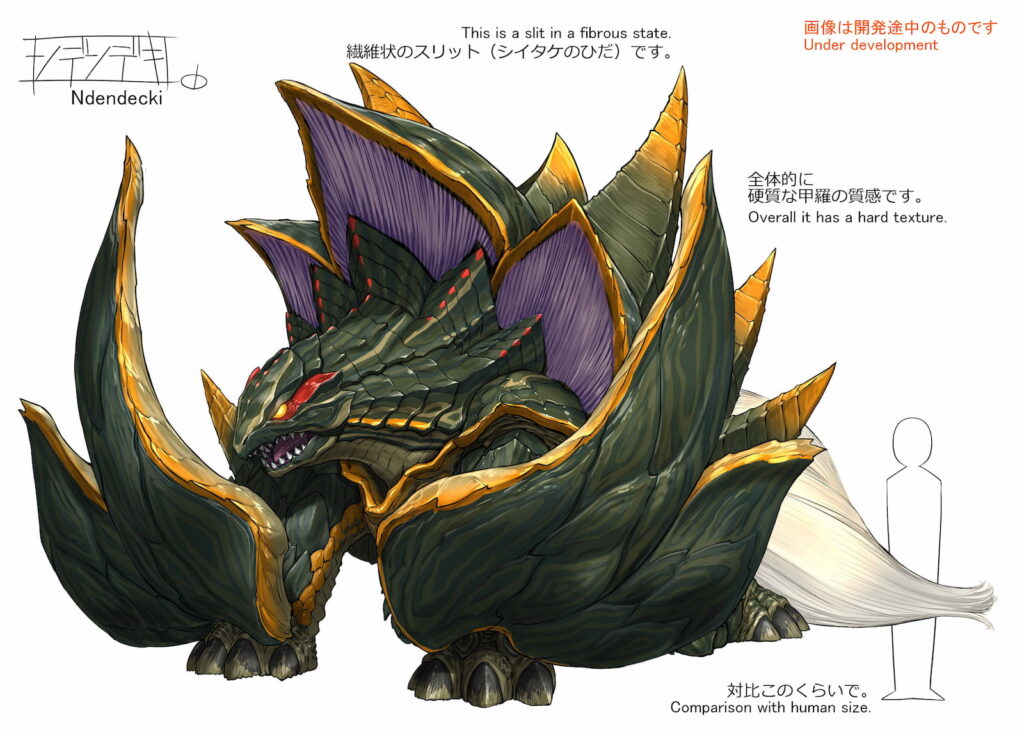
If you’ll allow me this tangent, one of my particularities is that I always set the possibilities for the design during the sketch check, before the details are added.
Of course, this is because fixes after the details are added and ‘rewinds’ of work can become very problematic…but rather than simply because I’m prioritizing the studio’s schedule, it’s more because I don’t want to allow any “coolness in atmosphere only” that can slip through due to colors and touch-ups. Anomalies (kaiju) always need to be able to stand on their own without any bells and whistles. So it only passes inspection if it can make people smile at the sketch stage.
Terrifying Cosmic Rays
Once the design and detailing is complete, we finally move on to modeling. (bee tribe handles this as well) Even though they’ve been provided with art to base the modeling off of, they need to make sure it looks cool from every angle, and since it’s in 3D now, this sometimes necessitates fixing non-integrated parts that weren’t noticed during the 2D design phase.
How much of the original image can they retain while transforming it into 3D? This is where Ishii’s checking (determination) really shines.
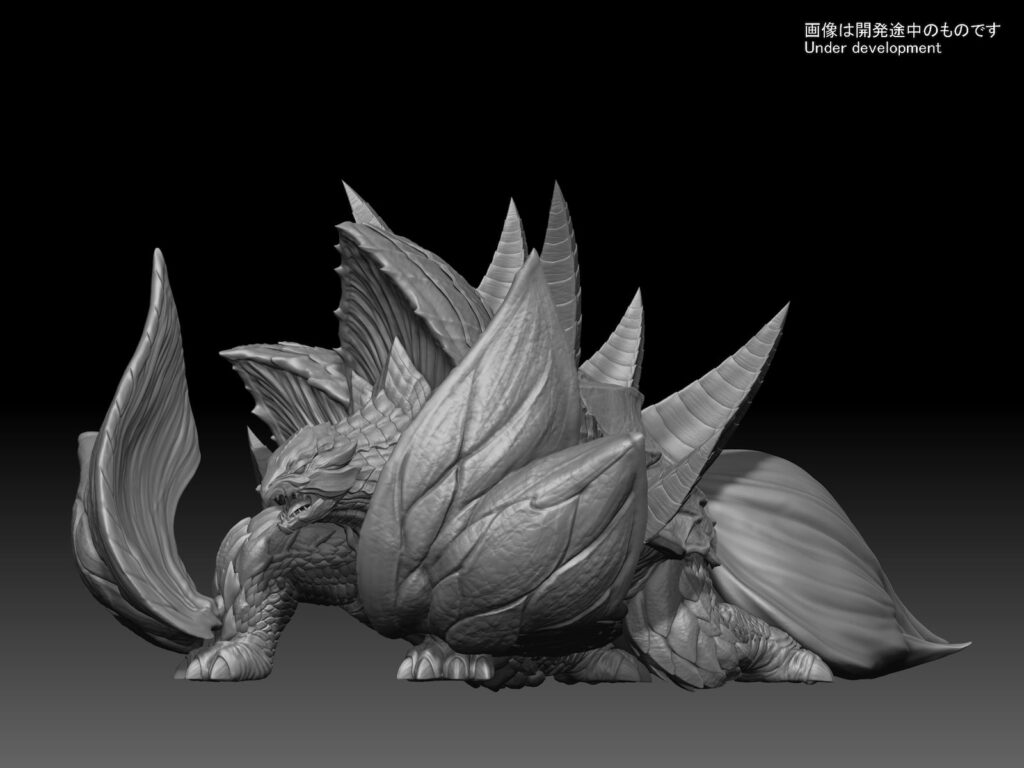
I’m always happy to see modifications being added here and there to make it look even cooler. This is one of the things I love about bee tribe’s modelers.
Incidentally, at this point in my work I start to lose vocabulary and just end up murmuring words of wonder like “Wow” and “Amazing” over and over again. In the end, I devolve from a game developer into just another old man who loves kaiju.
From this point on, they add textures and handle the light/shadow processing until the work is finally completed…
As to what the completed version of Ndendecki looks like…I hope you’ll all search for it on the field and encounter it yourselves. (And then please kill it or let it kill you)
Humorous Confessional
In conclusion…
I intended to make this as brief as possible, but it ended up becoming a very long explanation about how creating anomalies works. Sorry about that, and thank you for sticking with me all the way to the end.
In the beginning, I planned to handle anomaly designing in a pretty wild fashion, similar to how Professor Utonium just tosses in Chemical X with a bunch of different things and bam, all done! But in the end, I actually approached it in a much more serious fashion than I thought I would…and I regret it a great deal.
I can’t comprehend how much I have to really say about this – it just keeps flowing out. My heart is quite the chatterbox… Someone said that line a long time ago, and it’s true.
In conclusion, for real this time.
I can’t imagine how difficult/troublesome it must have been for the translator to translate all of this into English. I imagine that not even Japanese people can understand every last bit of this laundry list of words. Sorry about that!

